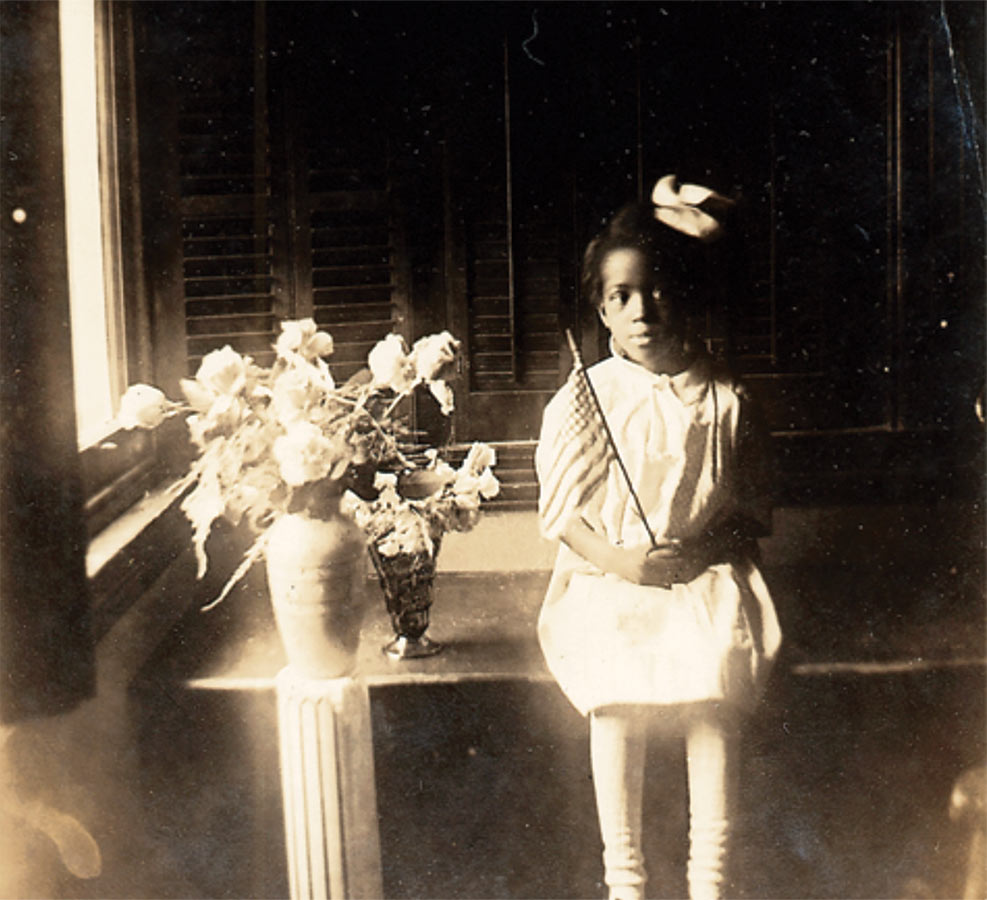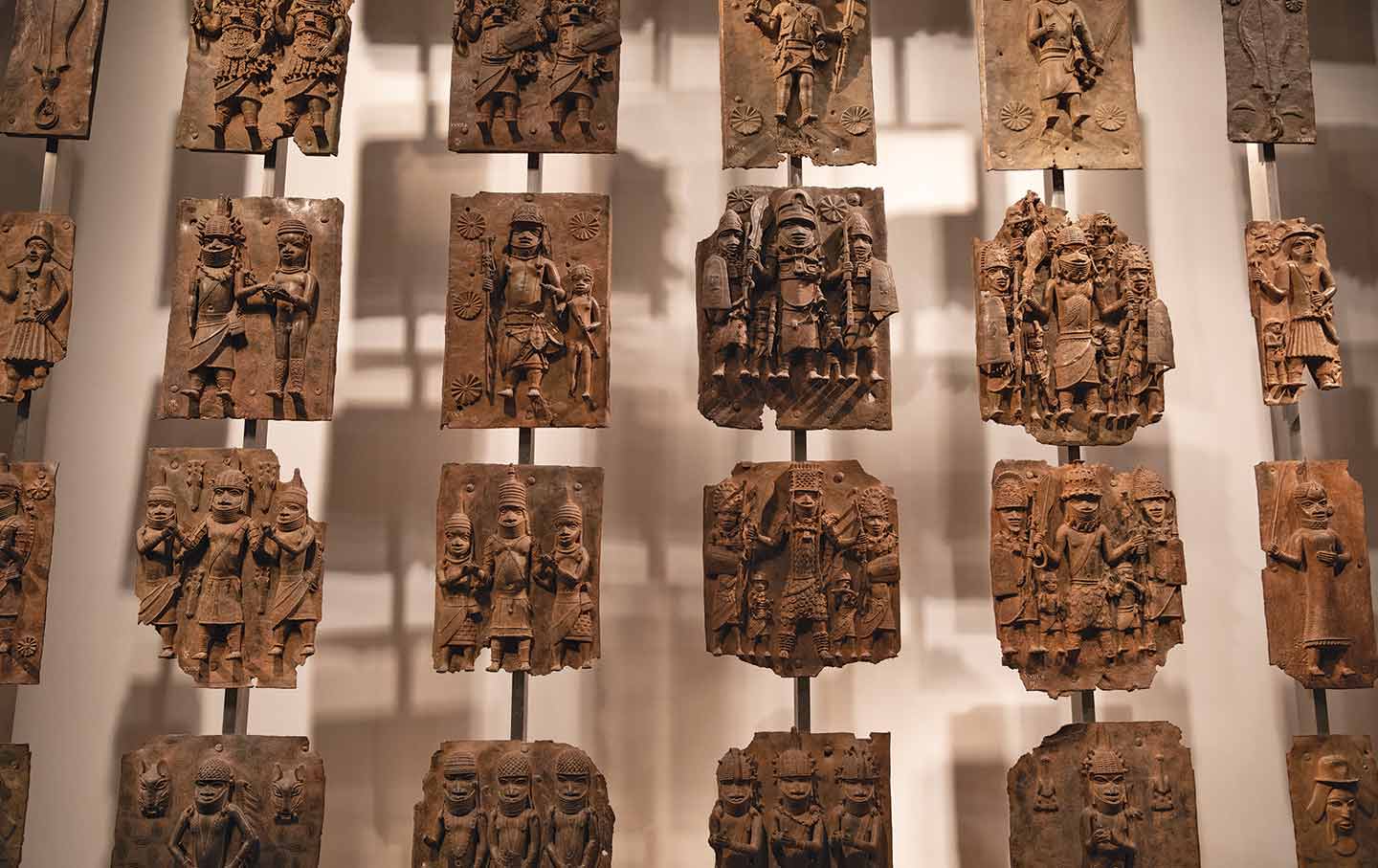What About Black Life?
The art of everyday Black experience.
Christina Sharpe and the Art of Everyday Black Life
In Ordinary Notes, Sharpe considers Black culture “in all of its shade and depth and glow.”

Days after Tyre Nichols was killed by five Memphis police officers earlier this year, the city’s police department released footage of his murder. The videos sparked protests in Tennessee and across the country, demonstrating once again that depictions of state violence and Black death can spur national action and bring bodies into the streets. But seeing this sequence of events play out yet again raises a different question: What about Black life? Can it also spur people into action? Nichols, an amateur photographer of the urban and rural South, would not have wanted his legacy to endure through the lenses of police body cams or local surveillance cameras. His portfolio of photographs includes experiments with color and perspective that revel in the beauty, love, and charm that constitute the Black aesthetic of the everyday. What would happen, what actions would be sparked, if we disseminated these images invested with the vibrancy of Black life and subjectivity as well?
Books in review
Ordinary Notes
Buy this bookIn her new book, Ordinary Notes, which was a finalist for this year’s National Book Award for Nonfiction, Christina Sharpe explores this question without providing any easy answers. A lush enmeshment of photographs and other images with notes on various subjects—some as short as a phrase, others as long as a few pages—the book invites its readers to engage with the multitudes of Black life, to think about and work through them without expecting this engagement to necessarily repair the injustices of the past or the present. Sharpe’s brilliant collage of materials probes how “Black people make a life in beauty and in struggle” in the face of structural racism and precarity. In close and provocative readings of Toni Morrison’s Beloved, Dawoud Bey’s black-and-white landscapes, Black Lives Matter protest video stills, Torkwase Dyson’s multimedia installations, and other notable public projects, Sharpe considers Black culture “in all of its shade and depth and glow.” But she also notes that while the images of everyday Black life are valuable counterweights to the numerous images of everyday Black death that circulate, they too will not be enough to abolish anti-Blackness.
In many ways, Ordinary Notes extends from Sharpe’s previous work, which has showcased how the typical, the commonplace, and much of what has been naturalized as such have contributed to the experience of being Black in the United States today. In Monstrous Intimacies: Making Post-Slavery Subjects, Sharpe—a professor of Black studies at York University in Canada—examined how the sexual and physical violence inflicted on the enslaved continues to haunt the formation of Black subjectivity in the present. With In the Wake, she combined meditations from her own life, analyses of the historical record, and close readings of works of contemporary Black art to consider the kinds of Black lives and aesthetic practices that emerge out of what she calls “being in [slavery’s] wake.” To live knowing that the effects of slavery persist into the present, Sharpe argues, profoundly affects not just public life but our private lives as well; to study the afterlife of slavery therefore requires an approach to history and culture that looks beyond the formal disciplinary constraints of the academy and into the realm of the felt, the subjunctive, the conjectural. One must turn to poetry as well as to sociology, art as well as economics, culture as well as politics.
Along the lines of these previous endeavors, Ordinary Notes breaks out of the reductive conventions of academic scholarship in the pursuit of Black study. Just as In the Wake braided together personal biography and critical theory, disclosing how a series of deaths in Sharpe’s family deeply affected her and how these lives lost illustrate the extent to which slavery’s insistence on Black inferiority continues to guide the modus operandi of various American institutions, Ordinary Notes brings together a variety of media—ephemeral, historical, social, and otherwise—in order to tell a personal and individual story that contributes to and is shaped by a larger structural one.
For Sharpe, photographs are particularly useful tools for telling these stories. Drawing from photographs in her own personal library as well as those found in various archives, she shows how each picture—especially those featuring Black subjects—always documents a negotiation of power among the people in the photographs, those taking them, and those viewing them. An old photo of the writer’s mother and grandmother leaning gently into each other, the former dressed in a Halloween costume made from scratch by the latter, displays a tenderness that would have been lost in the official paperwork, “those archives that suspend and defer Black life in ways that would make our living tangential to some other living, not ours.” A well-known photograph of Elizabeth Eckford being harangued by an angry white mob as she desegregates Little Rock Central High School is juxtaposed with a recent image of white nationalists in Charlottesville, Va., chanting anxiously about their replacement. Sometimes Sharpe presents us with pictures that are more opaque—at one point, photos of the condensation and frost on her window panes serve to illustrate how important it is “to notice or observe with care.” Each photograph, Sharpe reminds us, gathers so much within it: the depths of intimacy between a mother and a daughter, the racist vitriol that can be found even in a white supremacist’s spittle, the calm of routine weather.
In poring over these images, Sharpe threads a needle between Roland Barthes’s ruminations on photography, which insist that the medium is often haunted by a sense of death, and those put forward by, for instance, Frederick Douglass, which argue for the positive political work that photographs can do, especially when it is Black photographers working against the rampant proliferation of anti-Black caricatures. Sharpe does not entirely disagree with Barthes or Douglass, but she does think that neither school of theory accounts well enough for the filters that photographs are viewed and understood through. While Douglass had grandly claimed in a speech titled “Pictures and Progress” that photography could help usher in a social advancement for Black Americans that would “dissolve the granite barriers of arbitrary power, bring the world into peace and unity, and at last crown the world with justice, liberty, and brotherly kindness,” Sharpe contends that this might place too much faith in the observer’s ability to transcend their own negative preconceptions of Black life.
One example, in fact, is provided in Sharpe’s discussion of Barthes’s writing. For Barthes, a portrait taken by the African American photographer James Van Der Zee of a Black family in Harlem dressed in formal attire signifies the unfortunate (because it is impossible) desire “to assume the White Man’s attributes,” a “spectacle” that stirs “almost a kind of tenderness” within him. But as Sharpe notes, Barthes’s reading of the photograph is itself “a gaze and not a look,” as it projects the desires of whiteness onto the picture’s Black subjects.
Who are photographs for, anyway? More specifically, what purpose do memorials to the victims of slavery and racism—which often employ images of Black suffering—serve, and who are they for? Throughout Ordinary Notes, Sharpe directs our attention to the ways in which we choose to memorialize as well as to the memorializations themselves. Such memorials, she suggests, cannot always “be” for everyone, but so few seem to be for Black people. When Sharpe visits the Whitney Plantation, a former plantation site about an hour west of New Orleans that has been restored as a center for education on the history of chattel slavery, the founder of the museum goes out of his way to assure white visitors that none of them were responsible for the atrocities that once occurred there. For Sharpe, such an assurance not only sanctions whatever feelings are aroused in the white guests as they peruse the plantation; it also obscures how much the “peculiar institution” continues to echo in the culture, structures, and interpersonal relations that shape our lives today. Bronze sculptures of enslaved children dressed in overalls and work aprons are displayed throughout the plantation, intended to galvanize white visitors into anti-racist action by highlighting the innocence that was lost on that site, even as Black innocence is lost all around us in the here and now, every day. Sharpe knows why the plantation doesn’t have any sculptures of Black adults on display: They tend to play a different role in the white imaginary, often forcing white audiences to reckon with “the culpability, the debt, the entanglements, and the ongoing brutality of slavery’s afterlives.”
Sharpe does not restrict her critique to memorials founded and funded by white patrons and institutions : At one point in Ordinary Notes, she narrates her experience at a screening of a short film produced by Claudia Rankine that stitched together recordings of interactions between Black people and the police, many of which depict excessive violence by law enforcement. She then reproduces a letter written by Rachel Zellars, a Black professor who had attended a similar event, that asks and elaborates on a single question that Sharpe directs at Rankine: “Do you consider the impact your film will have on Black people in the room before you show it?”
Elsewhere in the book, Sharpe describes a visit to the National Memorial for Peace and Justice in Montgomery, Ala., which was created by the Equal Justice Initiative. While she’s there, a weeping white woman interrupts Sharpe’s walk through a graveyard built to commemorate the thousands of African Americans who had been murdered by lynch mobs. The woman approaches Sharpe with an expression of regret and offers an apology, but Sharpe doesn’t respond: “With her apology, she tries to hand me her sorrow and whatever else she is carrying, to super-add her burden on my own.”
Often, Sharpe notes, museums, art galleries, and monuments dedicated to the Black experience purport to do a service for Black audiences, but at best it is one limited by the service they also provide for white audiences. Many of these memorials are designed, above all else, to remind those who need reminding of a history that others know all too well. As Sharpe adds, they also usually have another problem: By framing their memorializations as studies of something totally relegated to the past, they offer a model of history that erroneously stresses discontinuity between yesterday and today and misses how much of American history has already repeated itself. Slavery and Jim Crow may have formally ended, but their legacies—mass incarceration, redlining, police brutality, Black maternal mortality rates, environmental racism, and many others—all continue to manifest themselves today. The damage that has been done continues to be done.
Perhaps we will never finish reckoning with our incomplete past and will have to accept that fact. We will never fully know history, much the way we will never fully know one another. At a certain point, a little more than halfway through Ordinary Notes, Sharpe wonders if this unknowability is itself something that history and memorialization should try to preserve. Writing movingly about her mother, Sharpe pauses and expresses an uncertainty about how candid she has been: “Maybe I ought to return my mother to her own opacity; allow some description to fall away.”
Ordinary Notes is a large book full of ideas, both ephemeral and enduring; in it, Sharpe offers much piercing analysis but also, in other cases, respects the mysteries of the everyday and the beauty that comes from them. Sometimes the images of Black life should prompt us to action; at other times, they should simply remind us that if we surrender to our own beauty, perhaps we can ride it.
More from The Nation

The Agony of Aaron Rodgers The Agony of Aaron Rodgers
Is he the world’s most interesting athlete or is he just a washed-up crackpot?

Can You Understand Ireland Through One Family’s Terrible Secret? Can You Understand Ireland Through One Family’s Terrible Secret?
In Missing Persons, Clair Wills's intimate story of institutionalized Irish women and children, shows how a family's history and a nation’s history run in parallel.

Peter Schjeldahl’s Pleasure Principle Peter Schjeldahl’s Pleasure Principle
His art criticism fixated on the narcissism of the entire enterprise. But over six decades, his work proved that a critic could be an artist too.

How the Western Literary Canon Made the World Worse How the Western Literary Canon Made the World Worse
A talk with Dionne Brand about her recent book, Salvage, which looks at how the classic texts of Anglo-American fiction helped abet the crimes of capitalism, colonialism, and more...

Along the Roads That Built Modern Brazil Along the Roads That Built Modern Brazil
José Henrique Bortoluci's What Is Mine tells the story of his country’s laborers, like his father, who built its infrastructure, and in turn its fractious politics.

The Long History of the "Elsewhere Museum" The Long History of the "Elsewhere Museum"
Can the ethnographic museum be reinvented?


